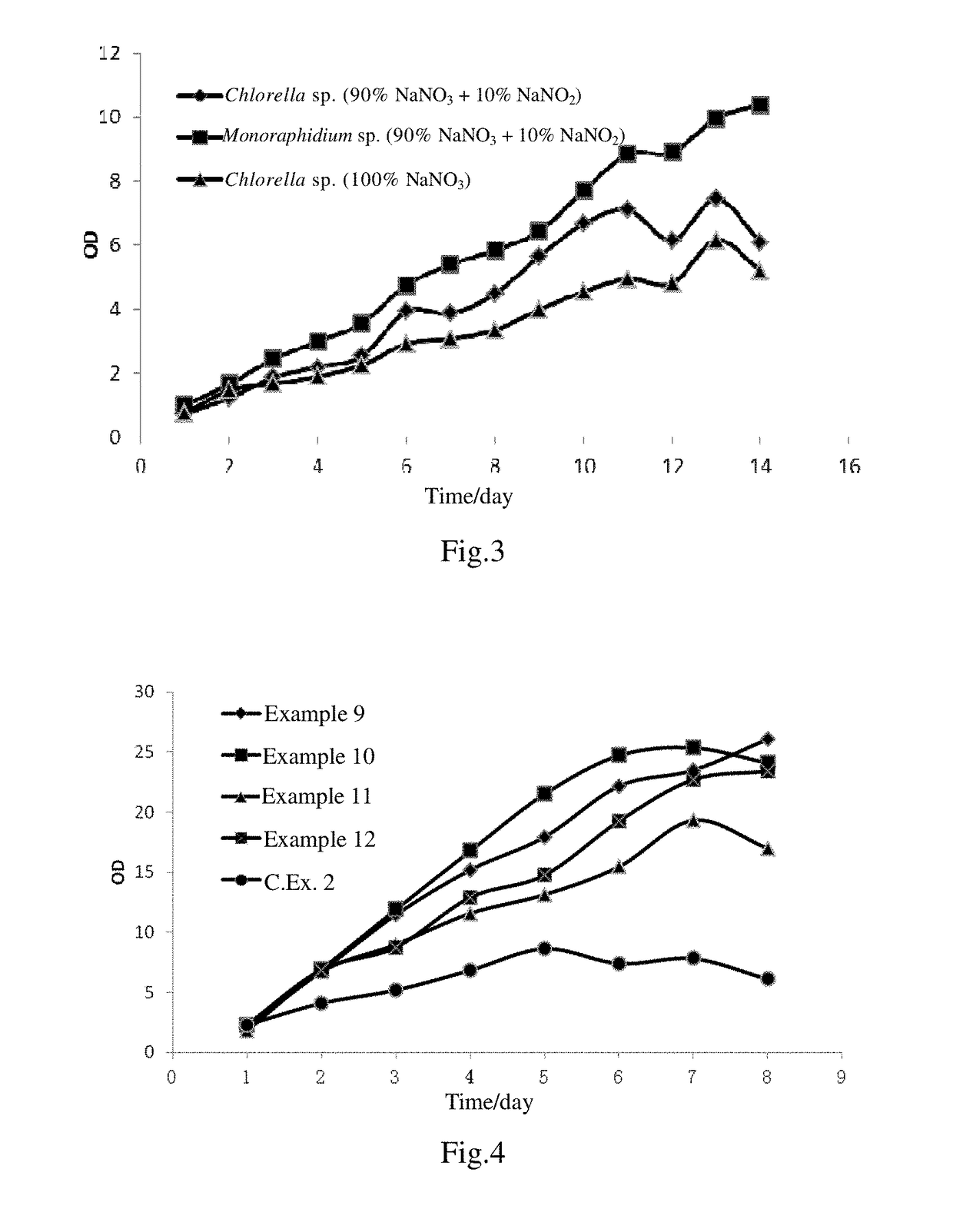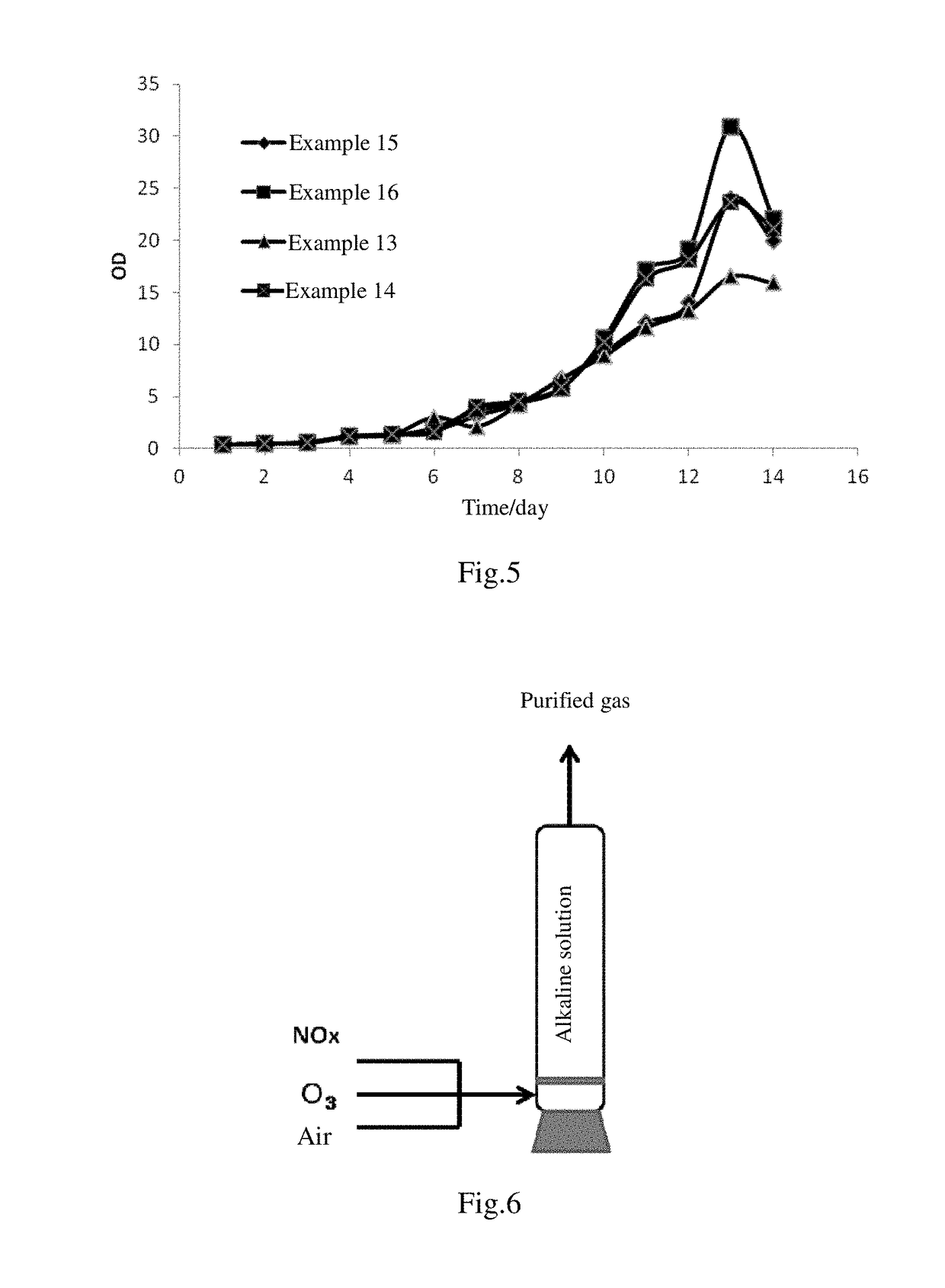A process of cultivating microalgae and a joint method of same with a denitration process
a technology of denitration process and microalgae, which is applied in the field of process of cultivating microalgae and a joint method of same with denitration of industrial waste gas, can solve the problems of high risk of bacteria contamination, failed cultivation, and severe impact on the environmen
- Summary
- Abstract
- Description
- Claims
- Application Information
AI Technical Summary
Benefits of technology
Problems solved by technology
Method used
Image
Examples
embodiment 1
2. The process , characterized in that the microalgae is a heterotrophic or mixotrophic microalgae.
embodiment 2
3. The process , characterized in that the microalgae is selected from the group consisting of Cyanophyta and Chlorophyta.
4. The process according to embodiment 2, characterized in that the microalgae is Chlorella sp., Scenedesmus sp., Monoraphidium sp. or Spirulina sp.
5. The process according to embodiment 2, characterized in that the organic carbon source used is at least one selected from the group consisting of sugar, organic acid, salt of an organic acid, alcohol, cellulose hydrolyzate and glucidtemns; preferably at least one of glucose, levulose, acetic acid, sodium acetate, lactic acid, ethanol, methanol and cellulose hydrolyzate, more preferably glucose.
6. The process according to embodiment 2 or 3, characterized in that the concentration of the organic carbon source used is generally controlled at 1 g / L microalgae suspension-30 g / L microalgae suspension, preferably 2 g / L microalgae suspension-10 g / L microalgae suspension.
7. The process according to any one of embodiments 1-...
embodiment 4
7. The process , characterized in that the organic carbon source used is at least one selected from the group consisting of sugar, organic acid, salt of organic acid, alcohol, cellulose hydrolyzate and glucidtemns.
8. The process according to embodiment 4, characterized in that the organic carbon source is used at a concentration of 1 g / L microalgae suspension 30 g / L microalgae suspension.
9. The process according to embodiment 1, characterized in that when the cultivation is a photoautotrophic cultivation or a mixotrophic cultivation, the illumination intensity is 1000-200000 lux.
10. A joint method of cultivating microalgae and denitrating an industrial waste gas, comprising the steps of:
(1) a cultivation step of cultivating microalgae;
(2) a separation step of separating a microalgae suspension obtained from step (1) into a wet microalgae (microalgae biomass) and a residual cultivation solution;
(3) a NOx immobilizing step of denitrating the industrial waste gas with the residual cult...
PUM
| Property | Measurement | Unit |
|---|---|---|
| concentration | aaaaa | aaaaa |
| concentration | aaaaa | aaaaa |
| temperature | aaaaa | aaaaa |
Abstract
Description
Claims
Application Information
 Login to View More
Login to View More - R&D
- Intellectual Property
- Life Sciences
- Materials
- Tech Scout
- Unparalleled Data Quality
- Higher Quality Content
- 60% Fewer Hallucinations
Browse by: Latest US Patents, China's latest patents, Technical Efficacy Thesaurus, Application Domain, Technology Topic, Popular Technical Reports.
© 2025 PatSnap. All rights reserved.Legal|Privacy policy|Modern Slavery Act Transparency Statement|Sitemap|About US| Contact US: help@patsnap.com



